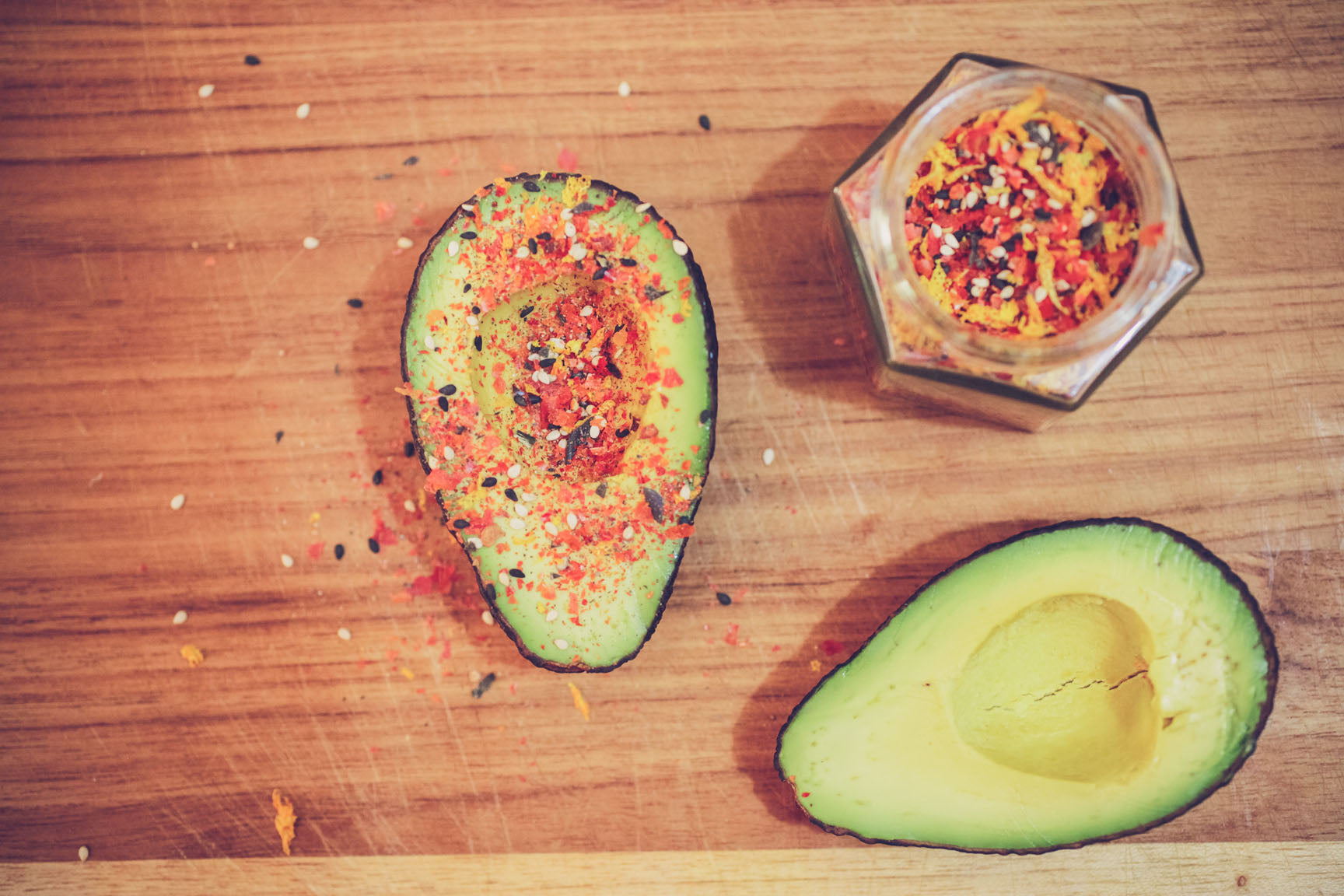- Continue Shopping
- Your Cart is Empty
Tomato Skin Togarashi

What You'll Need
Equipment
- measuring cups and spoons
- zester or microplane
- kitchen shears or scissors
- food dehydrator or oven
- mortar and pestle
- mixing bowl
- small jar with lid for storage
Ingredients
- 3 tomato skins (approximately 1 tablespoon ground)
- 2 tablespoons orange zest (from about 3 oranges)
- 1 tablespoon white sesame seeds
- 1 tablespoon black sesame seeds
- 1 teaspoon dried seaweed, such as wakame
- 1/2 teaspoon crushed red pepper flakes
- 1/4 teaspoon black peppercorns
Togarashi, in its various forms, is a Japanese condiment, traditionally made from seven spices. This recipe is a twist on the old standard, that delighted us when we came across it in Preservation Pantry: Modern Canning From Root to Top & Stem to Core
If you haven’t been canning recently, it’s easy enough to slip the skins off a few tomatoes. Simply drop tomatoes into boiling water and leave them for about 60 seconds. Fish them out with a strainer and drop them into ice water. The skins should wrinkle and slip right off with a little coaxing, and the tomato flesh can become sauce, or purée for a salad dressing.

Directions
Preheat an oven to 200° F, or prepare a food dehydrator. Line baking sheets with parchment paper, or use dehydrator sheets.  Spread the tomato skins over the drying sheets, and dehydrate for about 30 minutes. Rotate the sheet, if drying appears uneven, and dehydrate for another 15 minutes. The tomato skins are dry when they are red and crisp.
Spread the tomato skins over the drying sheets, and dehydrate for about 30 minutes. Rotate the sheet, if drying appears uneven, and dehydrate for another 15 minutes. The tomato skins are dry when they are red and crisp.
While the skins are drying, zest 3 oranges with a box grater or coarse Microplane.  Evenly sprinkle the orange zest onto a prepared drying sheet and dehydrate for about half an hour. Check the zest occasionally as it dries, crumbling it between the fingers to make sure large clumps do not stick together and inhibit even drying. The zest is done when it is still bright orange and completely dry.
Evenly sprinkle the orange zest onto a prepared drying sheet and dehydrate for about half an hour. Check the zest occasionally as it dries, crumbling it between the fingers to make sure large clumps do not stick together and inhibit even drying. The zest is done when it is still bright orange and completely dry.
While the skins and peels are drying, toast the sesame seeds in a small dry skillet over medium heat. Cook for about 2 minutes, shaking the skillet so the seeds toast evenly. Remove the seeds from heat and spread them in a plate or shallow bowl to cool.
Once the tomato skins, orange peel, and sesame seeds are all dry and cool, place the tomato skins in a mortar and grind them with the pestle to a fine powder.  Set them aside in a bowl, and grind the red pepper flakes and black peppercorns together.
Set them aside in a bowl, and grind the red pepper flakes and black peppercorns together.  Use scissors to snip the seaweed into small pieces and grind it together with the pepper mixture.
Use scissors to snip the seaweed into small pieces and grind it together with the pepper mixture.
Combine the seaweed and pepper mixture in the bowl with the tomato skins.  Add the orange zest and the sesame seeds, and mix well.
Add the orange zest and the sesame seeds, and mix well.  Store in an airtight jar out of direct sunlight for up to 6 months.
Store in an airtight jar out of direct sunlight for up to 6 months. 
 Over to You
Over to You
It’s part of our mission here at Mountain Feed to help you make delicious, sustainable, homemade food more often. Stop by and say hello on Facebook, Twitter, Instagram or Pinterest. Or, as always, you can do it the old-fashioned way and come by the store to speak with one of our in-house experts.

 Over
Over